
When your wedding plans incorporate specific cultural elements, it’s important to have a photographer who understands exactly how to capture them. A Jewish wedding is filled with so many special moments that make great photographic memories. You need a photographer you can trust who knows the important and key moments to capture. Not only have I documented many Jewish weddings, but I am Jewish myself and I loved my own Jewish wedding!
If you’re planning a Jewish wedding, there are so many beautiful traditions and rituals that you can include, all of which can be adapted to fit you and your values. So what exactly are the elements of a Jewish wedding? I’ve shared them below so you can see for yourself how to incorporate them into your day. (Make sure you read to the end for a special surprise!)
Before the Jewish Wedding Ceremony
Tisch – Literally meaning “table”, this joyous ritual invites close family and friends to surround the couple who are in two adjacent rooms so they don’t see each other before the ceremony. While historically guests would visit based on gender, today many couples – both heterosexual and LGBTQ – opt to have guests move freely back and forth between rooms. In each of the tisch rooms, you might find singing, torah study, speeches and jokes, and a celebratory toast. Guests are invited to share words of blessing to the bride(s) and groom(s). After the separate celebrations, the two parties merge into one when the couple sees each other for the first time.


Ketubah – Historically, the ketubah – marriage contract – was a legal document that outlined the rights and responsibilities of the groom towards the bride, especially in regards to financial obligations. Today, the text of the ketubah is more contemporary and egalitarian. The couple, their two witnesses, and the officiant(s) all sign the ketubah in a separate ceremony following the tisch and before the wedding ceremony. The ketubah is typically a beautiful piece of art that will be hung in the couple’s home after the wedding.


Bedeken – this ritual has biblical roots from the Torah when Jacob was tricked by his father-in-law into marrying Leah, who was presented to him as an already-veiled bride. Only after the ceremony did he discover that she was not Rachel, his intended bride. There are many ways to modernize this tradition, even if the bride isn’t wearing a veil or if there are two grooms. Couples can use this moment to put on each other’s kippot (head coverings) or simply affirm out loud that the other is indeed their intended partner.
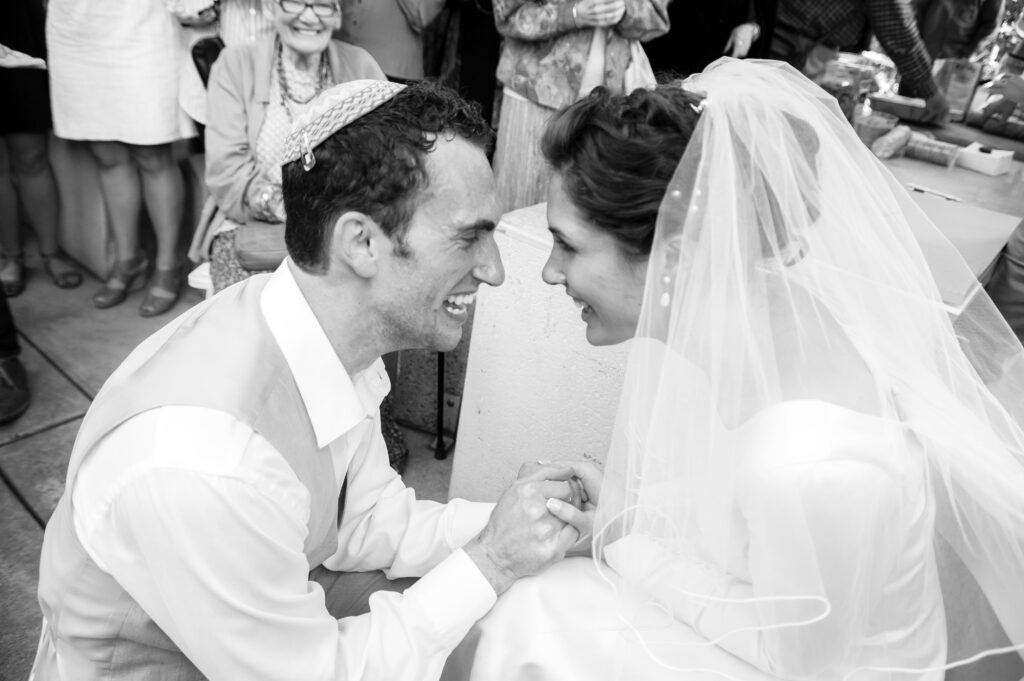
During the Jewish Wedding Ceremony
Chuppah: The ceremony takes place under the chuppah – a wedding canopy – which represents God’s sheltering presence in the lives of the couple, as well as the new home they will build together. The presence of family members under the chuppah, as well as its lack of walls, signify that family and friends will always be welcome in the couple’s home. A tallit (prayer shawl) that has special meaning to the couple can serve as a chuppah, as can a handmade quilt or other covering. Some wedding canopies are not free-standing, requiring four individuals, generally friends or family members of the couple, to hold the poles to which the chuppah is affixed.
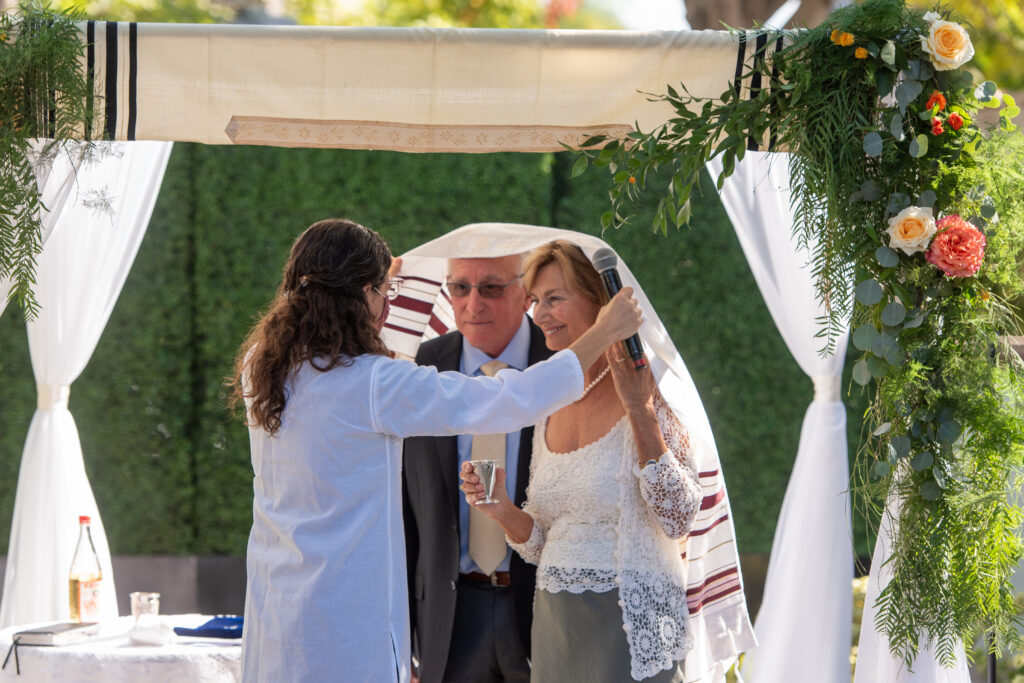
Circling: Among Ashkenazi Jews (those from eastern and central Europe), it is customary for one partner to circle the other seven times before entering the chuppah, alluding to the seven days of creation and as a reminder that marriage is itself a process of creation. In a more egalitarian update, many couples choose to circle each other three times, adding one final circle together.
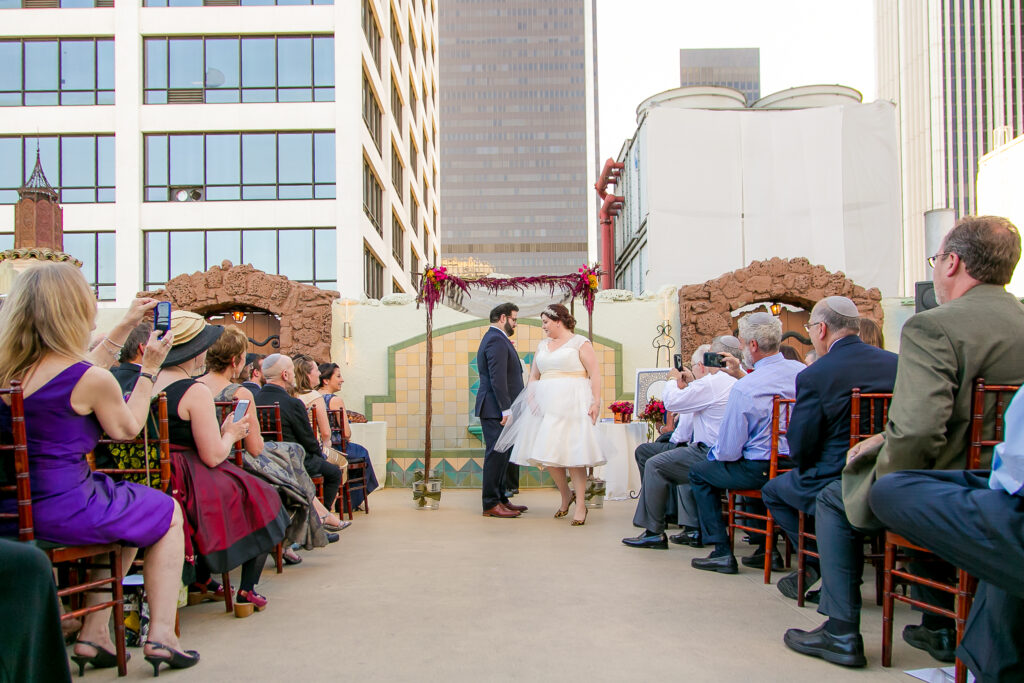
Kiddushin: The marriage ceremony begins with the traditional blessing over a cup of wine, which is then shared between the couple and sometimes, also their parents. The second blessing sanctifies the couple together in kiddushin, Hebrew for “marriage,” a word derived from the Hebrew word for “holy.”


Rings – According to Jewish law, the giving and accepting of a valuable item in the presence of witnesses is part of what sanctifies a marriage. Therefore, the couple generally exchange rings as they declare, in Hebrew, “Behold, you are consecrated to me with this ring, in accordance with the laws of Moses and Israel.” Each ring is placed on the right index finger, demonstrating the ancient belief that the forefinger is connected by a direct line to the heart.


Nissuin: The second part of the wedding ceremony begins with the Sheva Brachot, or seven blessings, which are chanted or recited by the officiating clergy or friends of the couple over a second cup of wine. The seven blessings give thanks for the fruit of the vine, the creation of the world, the creation of humanity, the perpetuation of life, the continuation of the Jewish community, the joy of marriage, and the couple’s happiness.


Reading the Ketubah: It is customary to read the ketubah aloud during the ceremony so that all can bear witness to the commitment the partners have made to one another.


Breaking the Glass: At the end of the ceremony, it is customary for one, and sometimes both people in the couple, to break a glass. This ritual is a reminder of the destruction of the Temple in Jerusalem in the first century, for even at the height of personal joy, we must not forget the tragedies the Jewish and world communities have endured. At the sound of the breaking of the glass, guests traditionally clap and shout “mazel tov” to offer congratulations and good luck to the couple.
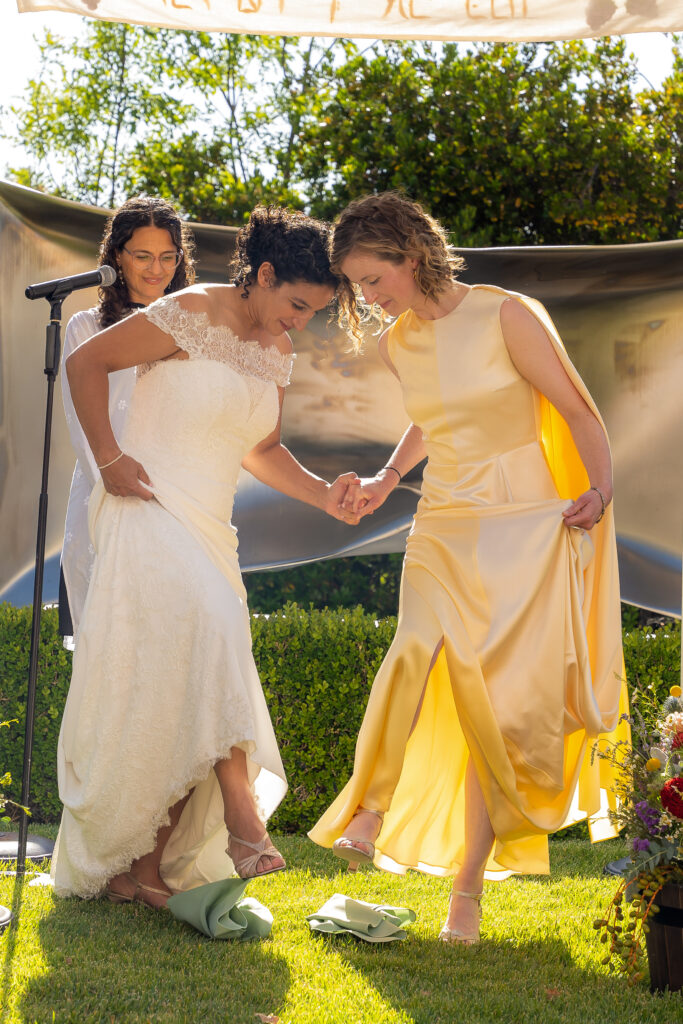
After the Ceremony
Yichud: Following the ceremony, the couple may proceed to a private room for yichud, which means “togetherness.” There, they will quietly share the excitement of their first moments together as a married couple before joining their guests at the reception.

Seudat Mitzvah (The Wedding Feast): The wedding feast, otherwise known as the reception, is actually articulated by Jewish law. Wedding guests are commanded to celebrate and to increase the joy of the couple on their wedding day. There’s no more joyful way to do this than with dancing, including the hora, a traditional Jewish circle dance. During this dance, guests lift the wedding couple up and carry them in chairs around the dance floor as part of the celebration of their marriage.


If you’re planning a Jewish wedding, let’s chat! There are so many unique and special ways to make the ceremony and celebration reflective of your values. I would love to talk through the process with you and document the traditions and personal touches you’re planning to incorporate into your big day.
(If you made this far, here are some images from my Jewish wedding!)


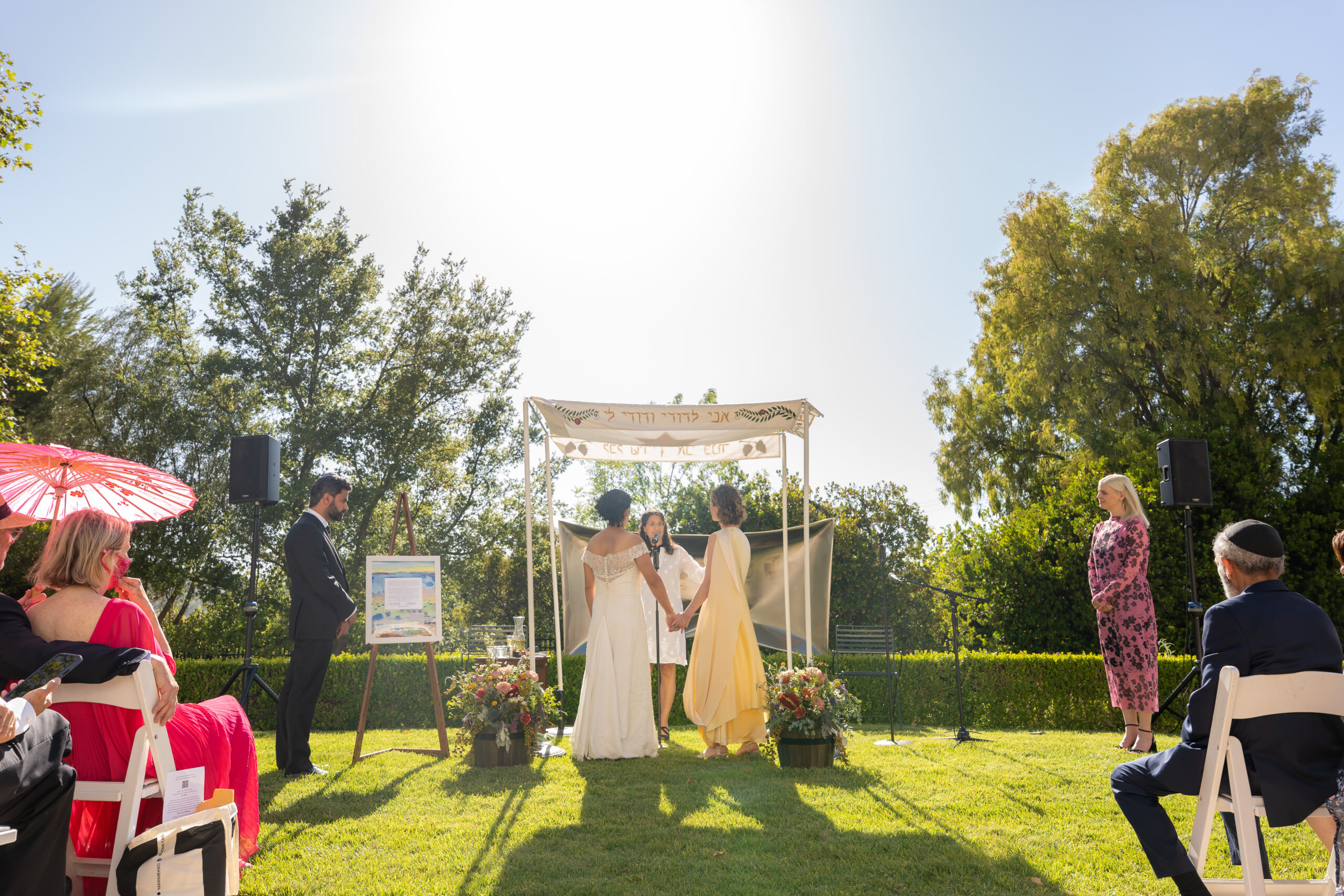
Comments +